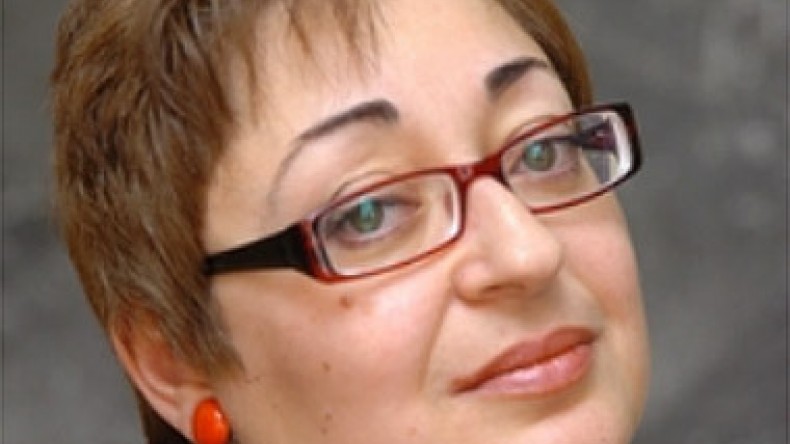
Large-scale project for 25th anniversary of Armenian pogroms in Baku will be initiated: Interview with Marina Grigoryan
“The bloody week, 13-19 January 1990, in Baku, as well as the events of 1988-1989 still remain as poorly explored pages of Nagorno Karabakh conflict.” Marina Grigoryan, the head of the project “Ordinary Genocide” said in an interview with Panorama.am.
“24 years passed after the Black January but still we don’t know enough about the realities of the third genocide of 20th century as well as about the persecution, repression, violence and deportation carried out towards the Armenians of Baku just after the events of the “Sumgait.” The pogroms of 13-19 January became the culmination of a chain of monstrous events that took place during the 2 years and that can be characterized as mass organized crime against the Armenian people of Azerbaijan.” Grigoryan said.
She stated that as a result of 1990 January tragedy and preceding events hundreds of thousands of Armenians of Azerbaijan were forcefully deported and expelled from the places where they lived for centuries. The Armenians lost their home and property, many of them lost their loved ones who became the victims of the genocide. Some of the refugees settled in Armenia, most of them had to move to other countries, many people migrated to the United States.
“The valuable testimony brought by eyewitnesses remains unclaimed, unexplored and unknown to the world. The only attempt to record the testimonies of the witnesses of Baku massacre was made by famous Baku journalist and writer Irina Mosisova in early 90s. The results are two books written by her, called “Vandalism in Baku” and “the Armenians in Baku: the existence and outcome.” These books include only the part of the evidence collected by her. Moreover, because of the objective reasons Mosisova could interview and write the stories from only the small part of the Armenians of Baku. Irina Mikhaelovna’s archive, as we know, has disappeared, while her books published in small editions became a bibliographical rarity. She herself died in 2008.” Marina Grigoryan noted.
According to the project leader, today, when already almost a quarter-century have passed, there is an urgent need to find more witnesses of the tragedy, to record their stories and present these records to the international community. This kind of work besides having historical and moral significance should also become an essential and undeniable argument of the Armenian side in the negotiation process of Nagorno Karabakh conflict.
“The significance of this project especially increases when we consider the fact that Azerbaijan has over all these years tended to distort the essence of Black January and bury the fact of genocide, pogroms and expulsion of many thousands Armenians as well as the representatives of other nations from Baku. Besides, in contrast to the “Sumgait”, no criminal case was initiated on the events in Baku, no investigation was carried out concerning the killings or other crimes, no trails were held. The remaining evidence is really scarce. It is possible that there is much evidence in the archives, but we don’t have access to them. The Soviet Center supported the leadership of Azerbaijan in its effort to hide the mass crime occurred, in spite of the fact that in those days of January many military servicemen belonging to different nationalities died and tens of thousands of their family members were deported from the city,” the head of the project said.
Marina Grigoryan informed us that in order to fill this gap a project called “After 25 years: Baku tragedy in eyewitnesses’ account” has been initiated. The project aims at the collection and video-recording of the testimonies and memories of former citizens of Baku, nowadays living in the U.S., as well as an edition and publication of the book to the similar well-known collection “Sumgait strategy in eyewitnesses’ account” translated into 9 languages. The screening of documentary movie is also envisaged for the near future.
“At present, the preliminary work on information collection and contact making is underway. We already found out in which states and cities of the U.S. former Baku citizens live and it is likely that in spring our team will leave for the Unites States to start video-recording.” Marina Grigoryan said.
The project leader also noted that the creation of the website karabakhrecords.info and the screening of the movie “Ordinary genocide: Baku, January 1990” made the former Baku citizens to appeal to the authors and express their willingness to share their stories about the events of 1988-1990 that took place in Azerbaijan. Some of these stories have already been videotaped and contain hitherto unknown details of the tragedy.
“All of this suggests that the implementation of such a project remains a relevant and important historical, political and informational propagandistic task for the Armenian side,” Grigoryan said.
She added that under the preparation framework of the 25th anniversary of Armenian Genocide in Baku, the books of Irina Mosesova will be reissued, while the book “The Armenians of Baku: the existence and outcome” will be translated into English.
Note that the project “Ordinary genocide” is being implemented by “Information and public relations center” under the administration of the RA president. The project produced a series of documentaries in five languages that tells about the events of Sumgait, Baku, Maragegh and the “Operation Ring”. The website Karabakrecords has been created as well as a number of books published and republished.
Newsfeed
Videos






























